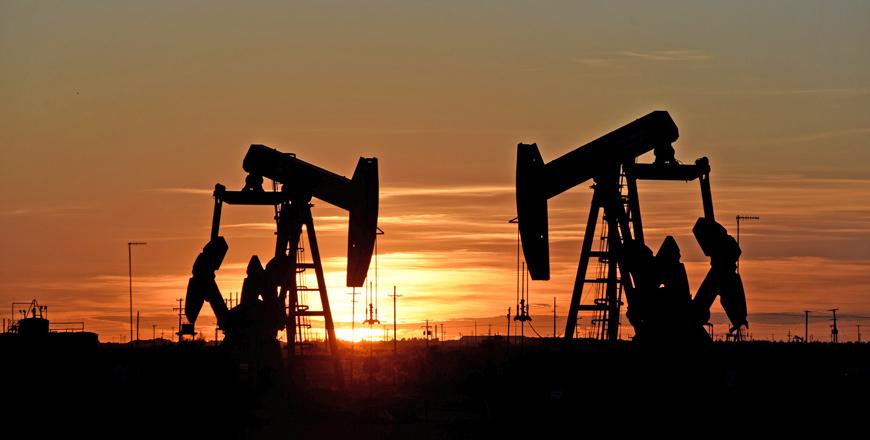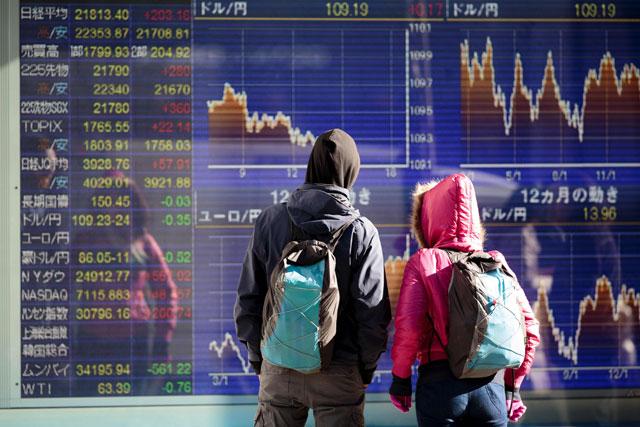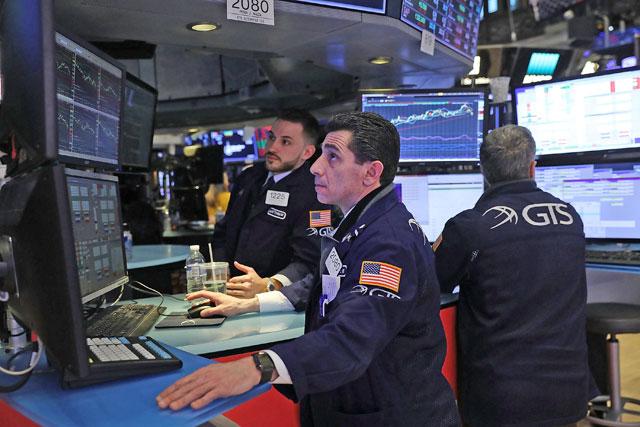You are here
Ukraine tensions send European stock investors running for cover
By Reuters - Mar 03,2014 - Last updated at Mar 03,2014

LONDON — European equity investors took fright at Russia’s military intervention in neighbouring Ukraine on Monday, dragging the eurozone Euro STOXX 50 index to its biggest daily fall since June.
Companies exposed to the region, such as Austria’s Raiffeisen Bank International, were the worst hit.
“Investors had underestimated the risks of an escalation in Ukraine, so the events over the weekend are a wake-up call for the market,” said David Thebault, head of quantitative sales trading at Global Equities in Paris.
Banks were among the top fallers, led by a 9.6 per cent fall for Raiffeisen, which has the largest exposure to Ukraine among European blue chips.
Carmaker Renault and brewer Carlsberg, which have significant exposure to Russia, fell 5.4 per cent and 5.3 per cent, respectively.
The pan-European FTSEurofirst ended 2.2 per cent lower at 1,318.24 points, its steepest fall since January 24, when economic and policy worries prompted a surge in anxiety over emerging market assets.
The Euro STOXX 50 index retreated 3 per cent to 3,053.99 points, its biggest fall since June 20, 2013.
The cost of insuring against further swings in eurozone blue chips, as measured by the Euro STOXX volatility index , rose 30.4 per cent, its biggest one-day rise since 2011, even though it remained at a relatively subdued level of 21.9 points, compared to a 2013 peak of nearly 27.
“[Emerging] markets remain a major concern for investors and will undoubtedly be source of higher volatility for the European equity markets over the coming months,” strategists at Societe Generale wrote in a note on Monday.
“We recommend protecting your European equity portfolio and even taking advantage of further volatility through derivatives,” they said.
Pretext for setback
Russian forces have taken control of Ukraine’s Crimea region, which has an ethnic Russian majority. Ukraine has stepped up its own military preparations while the United States has threatened to isolate Russia economically.
“This could be a pretext for a 5 per cent setback in the market,” said Francois Savary, chief investment officer at Swiss bank Reyl. He added that if the Euro STOXX 50 fell below the 3,000 level, it could represent a good entry point at which to buy into the index.
Savary and other investors expected an eventual political resolution to the Ukraine problems within the coming weeks, which they said should help equity markets maintain their upwards trend seen over the last year and a half.
A 50 per cent rally since mid-2012 has left the MSCI Europe index trading at roughly 14 times its earnings, above its 10-year average, Datastream data showed.
Toby Campbell-Gray, head of trading at Tavira Securities, also expected a political resolution soon to the problems in Ukraine and said equity markets would continue to be supported by the fact that they offer better returns than the bond and cash markets.
“We will see a mark-down for a few days, but people still want to buy this market — there’s nowhere else to put your money,” he said.
All but seven stocks in the FTSEurofirst 300 were in negative territory, one of the broadest selloff on the index over the past year.
A calmer macro-economic landscape over the past year and half has allowed investors to focus on the fundamentals of each company, bringing down stock correlation, a trend that many analysts expect to continue despite the recent, emerging market-related jitters.
“The ‘risk-on, risk-off’ phenomenon has become much less dominant since the end of 2012,” Peter Rigg, chief executive officer of HSBC Alternative Investments, said.
“Current P/E [price/earnings] multiples are above their 10 year average so individual company earnings growth is becoming a more relevant determinant of price moves than multiple expansion,” he added.
Separately, US stocks tumbled on Monday alongside other risky assets globally as Ukraine and Russia prepared for possible war after Russian President Vladimir Putin declared he had the right to invade his neighbour.
The S&P 500 had closed at a record high on Friday, and profit-taking was expected on Wall Street due to the political uncertainty. The index found some support when it fell to 1,840, but broke through it after the first attempt.
The S&P 500 extended losses in early afternoon trading and then recovered slightly to hover near the support level.
“There’s been a very significant rally,” said Rick Meckler, president of investment firm LibertyView Capital Management in Jersey City, New Jersey. “If you need an excuse to sell, this is a good one.”
Energy stocks could lose if relations between the United States and Russia deteriorate further. Volatility is likely to spike alongside the uncertainty of the situation.
“Anything that involves a boycott of Russian supplies, which are very significant, could impact the energy sector dramatically,” said Meckler. “In situations like this, you see very quick reactions reverse as people understand the scenario and how things play out.”
Both Brent and US crude prices rose more than 2 per cent each. The S&P energy sector index, which opened higher, was down 0.6 per cent.
The Dow Jones industrial average fell 207.75 points or 1.27 per cent, to 16,113.96. The S&P 500 lost 19.45 points or 1.05 per cent, to 1,840. The Nasdaq Composite dropped 58.584 points or 1.36 per cent, to 4,249.534.
Gold prices hit a four-month high as investors sought safe-haven assets, boosting gold stocks. US-traded AngloGold Ashanti shares gained 2.5 per cent to $18.01.
Though the focus will likely remain on Ukraine, the economic calendar was busy on Monday. US factory activity rebounded from an eight-month low in February and consumer spending rose more than expected in January, suggesting the economy was regaining some strength after a recent slowdown.
Related Articles
NEW YORK — Broad gains in the US equity market turned global stocks higher on Tuesday after President Donald Trump said a "great deal" could
US stocks overturned early losses to trade higher on Wednesday as some buyers returned to a market still shaking from a record fall for the
Wall Street's main stock indexes climbed more than 1 per cent on Friday, giving investors some solace after a week of huge swings that














